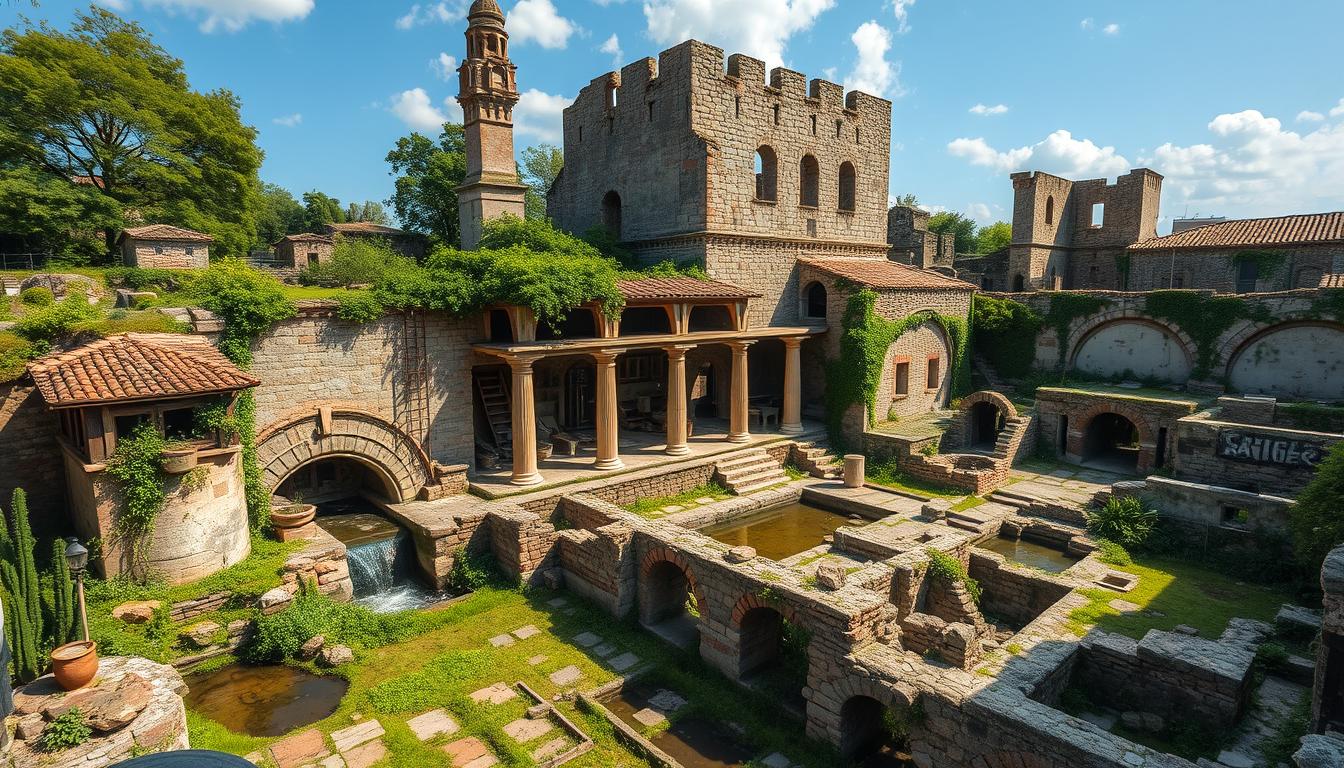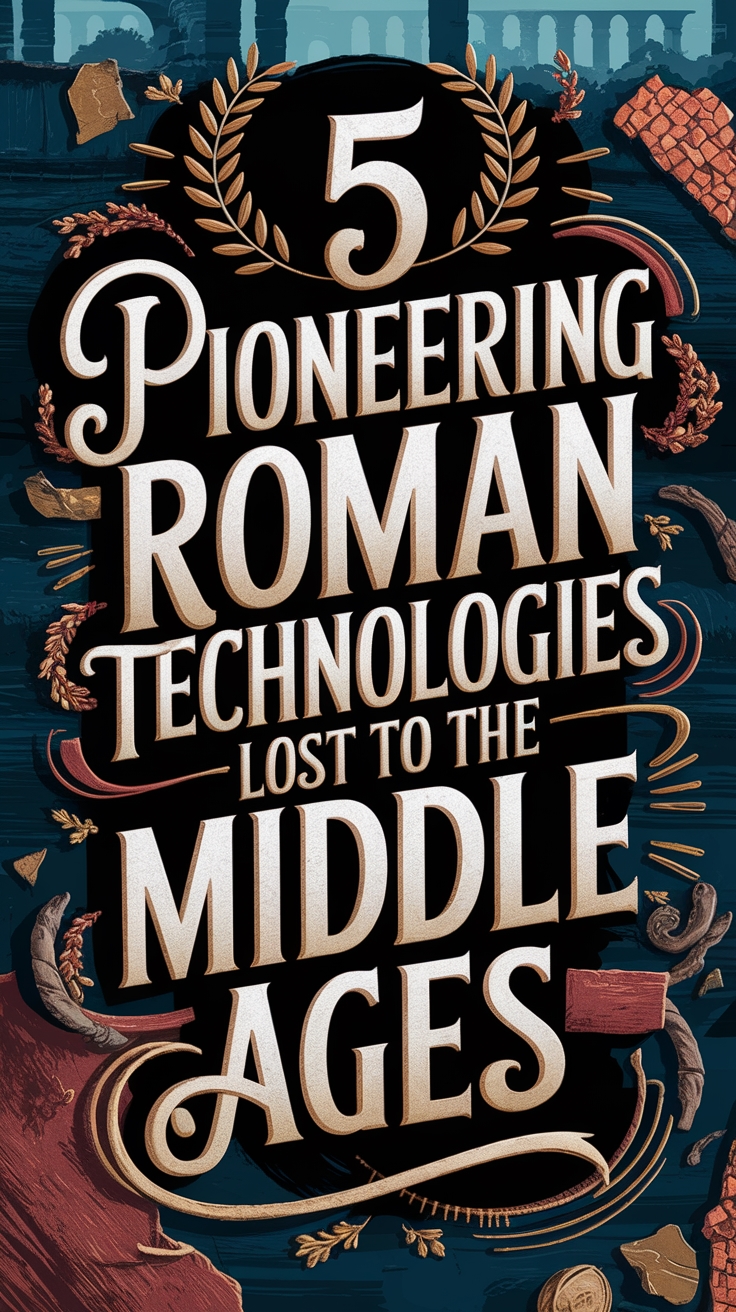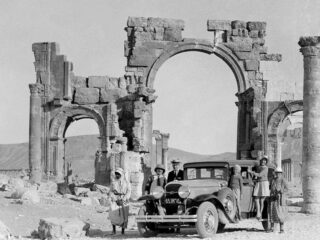The ancient Roman civilization was a shining example of technological innovation. They made huge strides in engineering and architecture that shaped human progress for ages. The Roman technology lost in the Middle Ages is a captivating story of advanced engineering marvels that disappeared during a time of cultural upheaval.
The Romans created advanced concrete and built complex transportation systems. Their work showed incredible scientific understanding. Their technology helped expand a vast empire, solving problems that wouldn’t be solved for hundreds of years after they fell.
The fall of the Roman Empire led to a big step back in technology. Many of their groundbreaking methods were lost to history. Learning about these lost technologies gives us a glimpse into the genius of ancient Roman engineers and craftsmen.
Key Takeaways
- Roman technologies were far more advanced than previously understood
- The Middle Ages represented a significant technological setback
- Many Roman engineering techniques remained unmatched for centuries
- Technological innovation requires sustained cultural infrastructure
- Ancient civilizations possessed sophisticated scientific knowledge
Roman Concrete: The Forgotten Formula
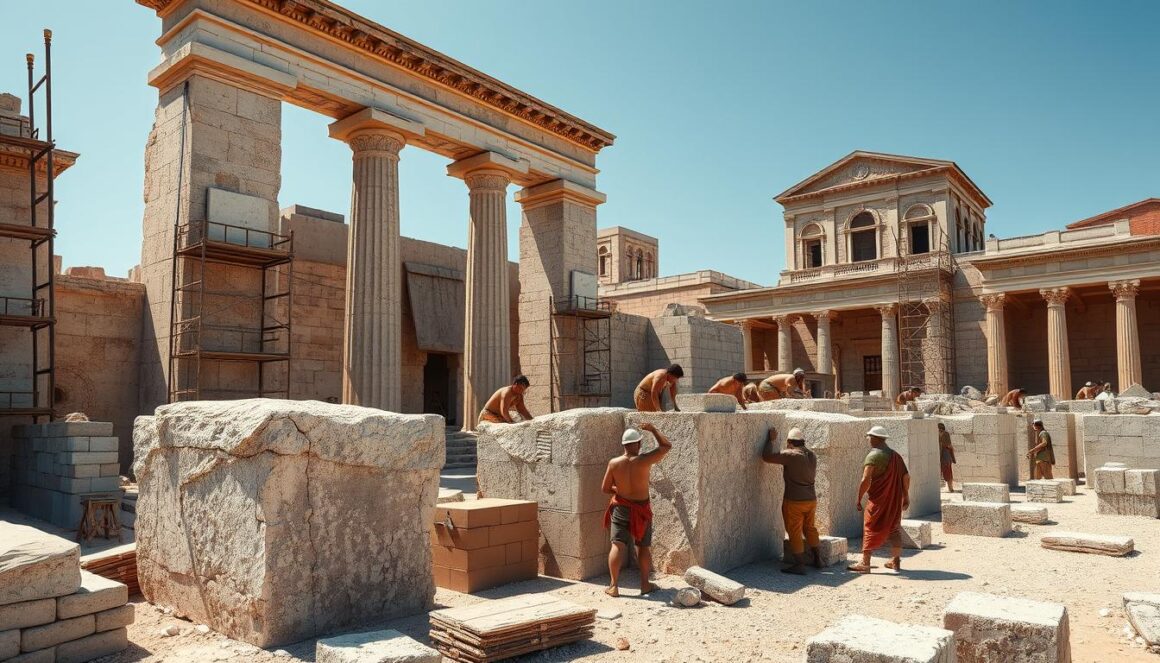
The fall of ancient civilizations often hides their amazing achievements. Roman concrete is a prime example of engineering genius that today’s builders find hard to match. Created around 42 AD, it showed unmatched durability that amazes scientists even now.
Scientists found that Roman concrete has a special self-healing ability. It gets stronger when exposed to seawater. New minerals like Al-tobermorite and phillipsite grow inside, making it more resilient against the environment.
The secret recipe of this incredible material was lost with time. The Romans mixed volcanic ash, lime, and seawater to make a concrete that lasted for centuries. The Pantheon in Rome is a testament to this, with its massive dome standing strong for millennia.
Unlike modern concrete, which cracks and becomes brittle, Roman concrete lasts for thousands of years. The exact formula is unknown, but research suggests lime clasts could help recreate its self-healing properties.
Roman engineers’ innovative methods changed construction forever. They built water-resistant structures like aqueducts and cisterns. Their use of hydraulic cement allowed them to create monuments that would test the skills of future builders.
The Incredible Hypocaust Heating System
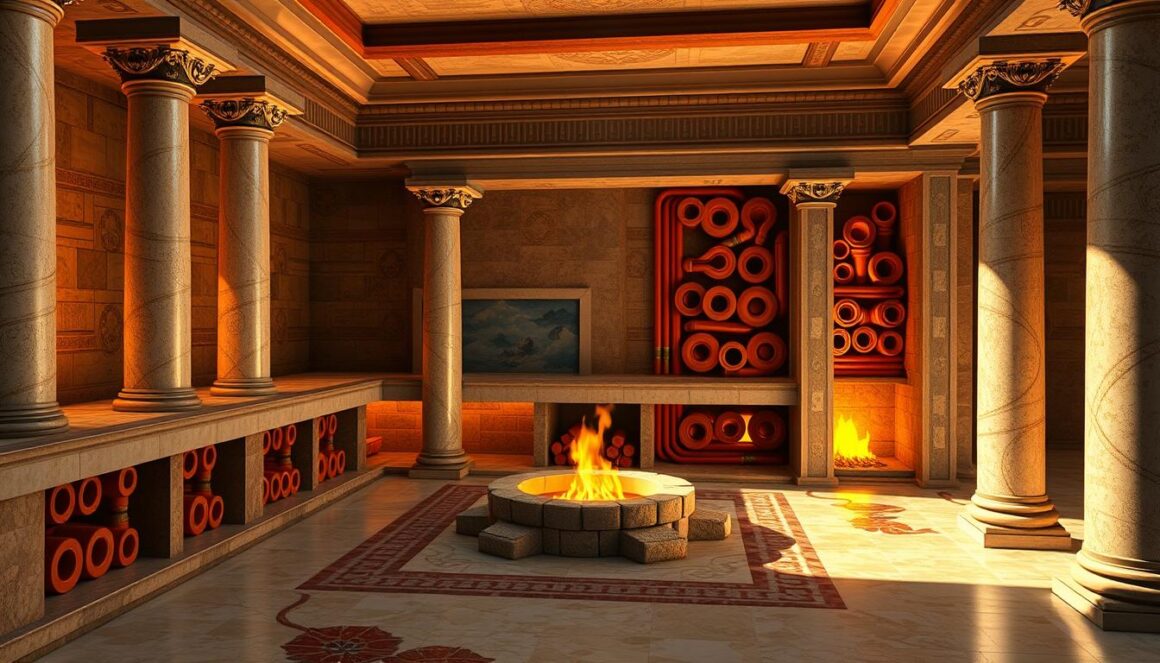
The Romans changed indoor heating with their smart hypocaust system. This technology was lost during the dark ages. It was a way to heat homes that was far ahead of its time.
The hypocaust system was created around 350 BC. It used underground chambers and hollow tiles to move hot air. Furnaces under the floor warmed the air, which then heated the floors and walls.
But, this advanced heating was forgotten in the Middle Ages. Only about 10% of Roman buildings had hypocaust systems left. It was hard to maintain and needed special skills.
Hypocaust systems were mainly found in public places, rich homes, and bathhouses. They showed how Roman society was divided. The upkeep, often done by slaves, showed the advanced yet unequal nature of this technology.
Aqueducts: Masterpieces of Engineering
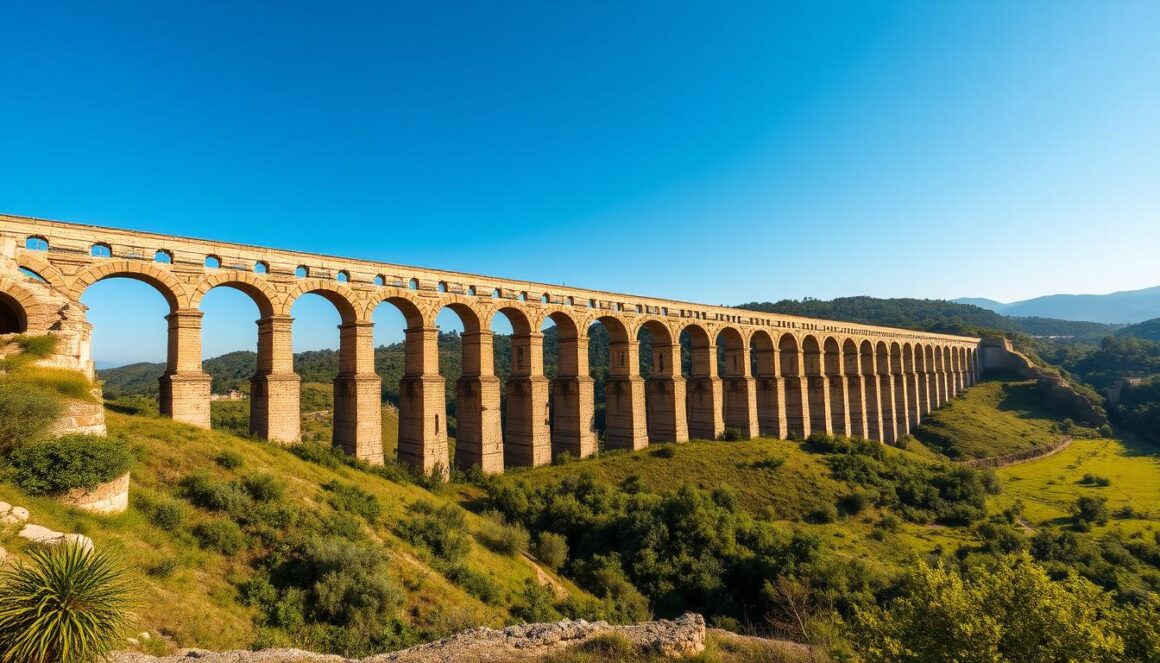
Roman aqueducts were incredible feats of ancient engineering. They changed city life by bringing water over long distances. These systems could move up to 1 million liters of water daily.
The Romans were geniuses at designing these systems. They made sure water flowed smoothly over long distances. The Aqua Claudia, for example, could carry about 190,000 cubic meters of water every day.
But when these systems vanished in the Middle Ages, cities suffered. The Romans’ advanced water systems were lost, affecting urban life. Aqueducts were key to the growth of Roman cities, making up about 27% of their infrastructure.
These structures were built to overcome tough terrains. Some parts were as high as 50 meters, supported by clever arches. The Pont du Gard, built in the 1st century AD, is a prime example of Roman engineering skill.
The Mystery of Roman Dodecahedrons
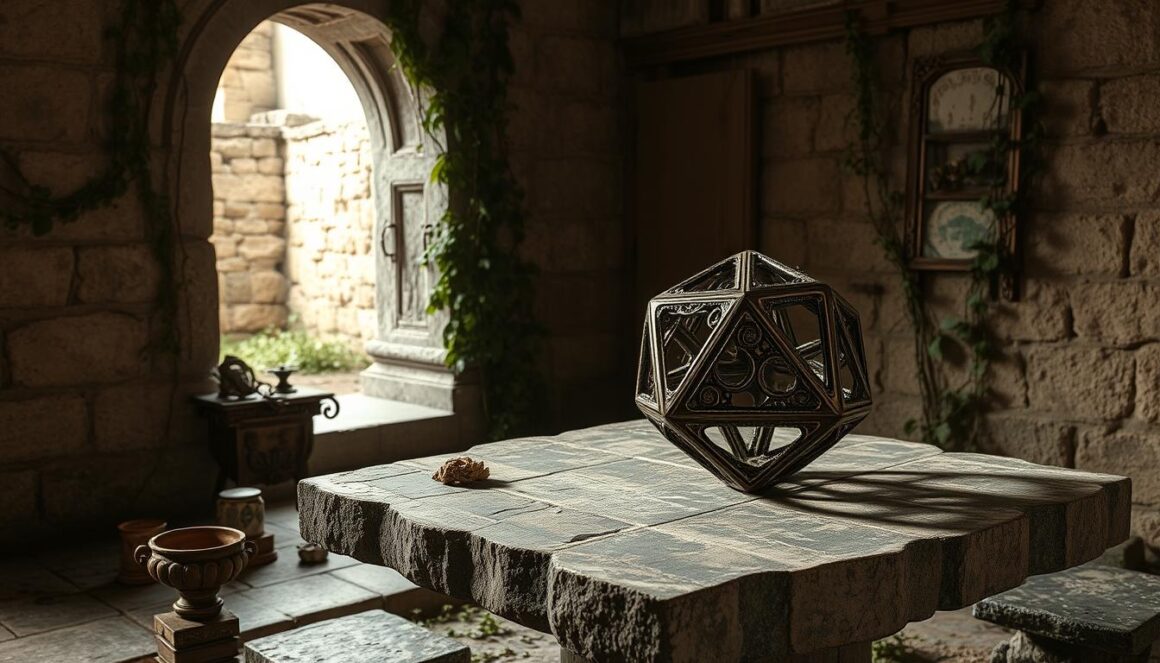
The Roman Empire left behind a mysterious artifact: the Roman dodecahedron. These bronze objects show how much knowledge has been lost over time. They are a big part of the Roman legacy that has been hidden for centuries.
Found in northern and eastern Europe, over 100 of these bronze shapes date back to around 200 AD. They are 1.5 to 4 inches wide. Each has 20 corner knobs and different sized holes on each side. Their design looks intentional, but we don’t know why they were made.
Many theories exist about their use. Some think they were candlesticks or tools for measuring land. Others believe they helped figure out when to plant winter grains. But, no one can say for sure. There are no writings or clear signs of what they were used for.
What’s interesting is that they were mostly found in cold places in Europe. This makes some theories hard to believe. Even though the Romans were known for their technology, these dodecahedrons are a big mystery.
The mystery of these objects shows how much we can forget over time. Each dodecahedron tells us about the complex culture of the ancient Romans. It also shows how hard it is to understand their technology and ways of life.
Lost Technology of Roman Roads
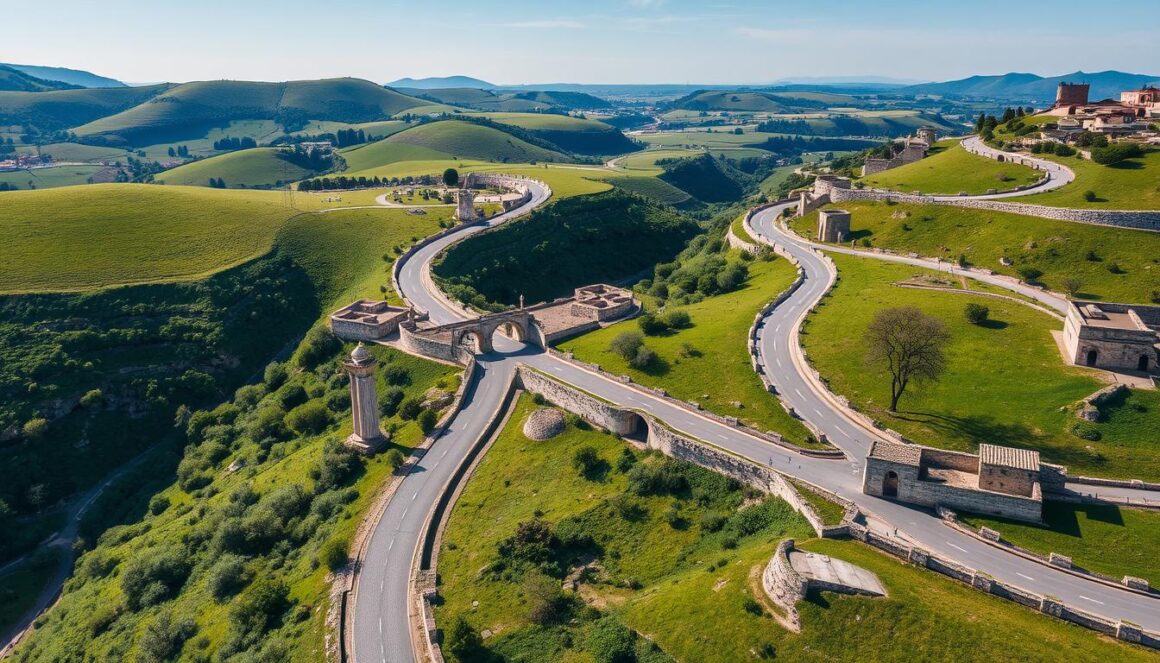
The Roman road network is a true marvel of ancient engineering. At its peak, the empire built 44,000 miles of roads. These roads connected distant lands with unmatched efficiency.
These roads were more than just paths. They were strategic wonders that helped armies move fast and trade flourish.
Roman engineers were true innovators. They used volcanic rock, gravel, and earth to build strong roads. Their skills in surveying made the roads straight and efficient.
Drainage systems and milestones were added to make the roads even better.
But, as the empire fell, this advanced technology was lost. The Middle Ages saw a return to simpler ways of building roads. The knowledge and skills needed to keep these roads in top shape were forgotten.
This decline had big effects. Europe’s transportation was limited, slowing down trade, communication, and cultural sharing for ages. The Roman roads became a memory of a bygone era, showing the high tech achievements that would take many years to come back.
Conclusion: 5 Pioneering Roman Technologies Lost to the Middle Ages
The fall of the Western Roman Empire in AD 476 was a big setback for technology. Almost all the tech knowledge from sixth-century Europe was lost during the Middle Ages. This change greatly affected human progress in technology.
Roman technology lost in the Middle Ages is a key moment in engineering history. The Romans had created amazing technologies like advanced concrete and roads. These were not seen again for centuries.
The death of Justinian I and the rise of Charlemagne made this period even more stagnant. This shows how much technology was lost.
The rediscovery of these lost technologies shows the genius of Roman engineers. They had created advanced concrete, heating systems, and water management. They even made mysterious artifacts like dodecahedrons.
This period of technological loss is a reminder of how fragile our knowledge is. It shows that progress can be stopped by political and economic troubles. The work of Roman engineers inspires today’s researchers and engineers to learn from the past.

